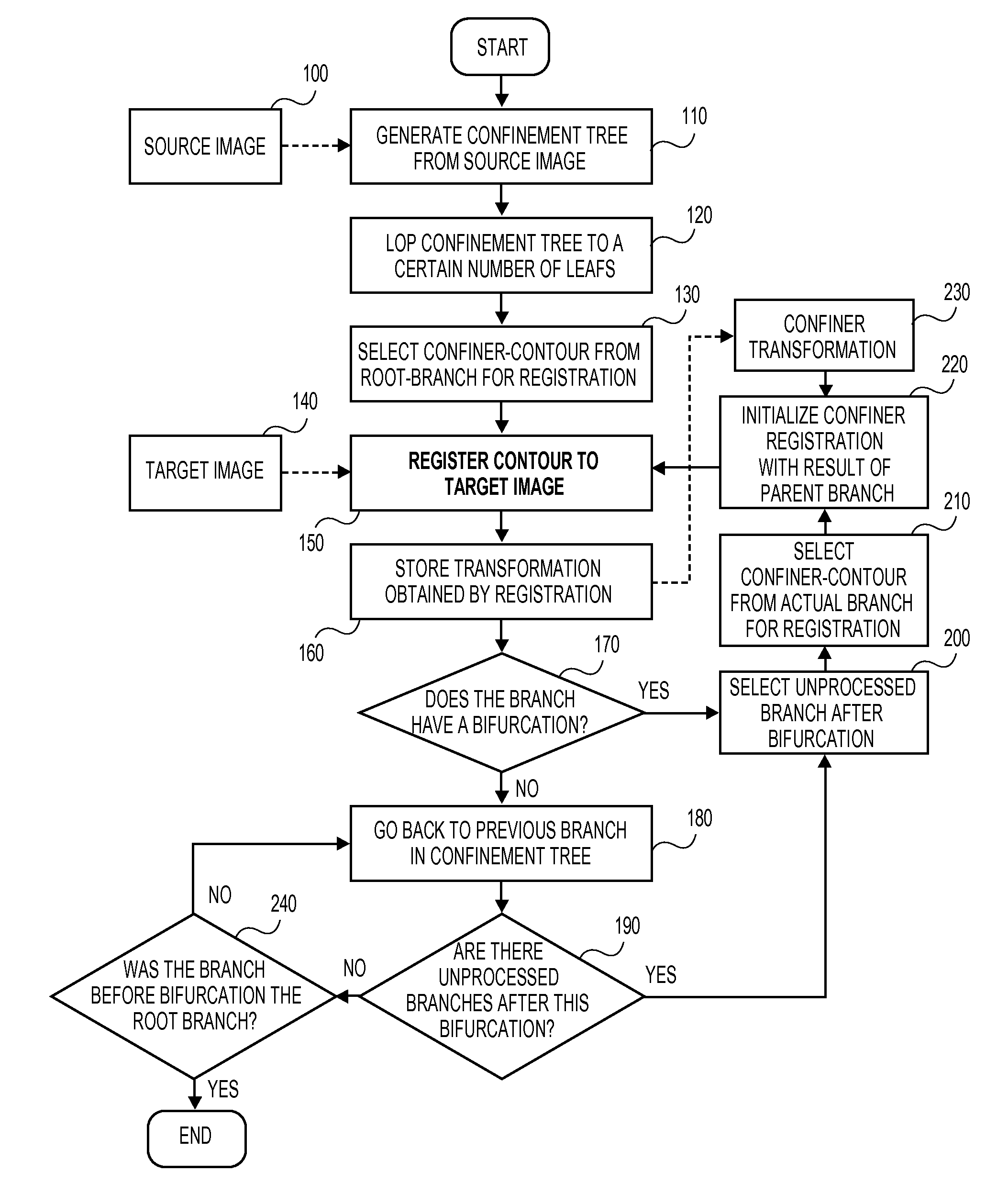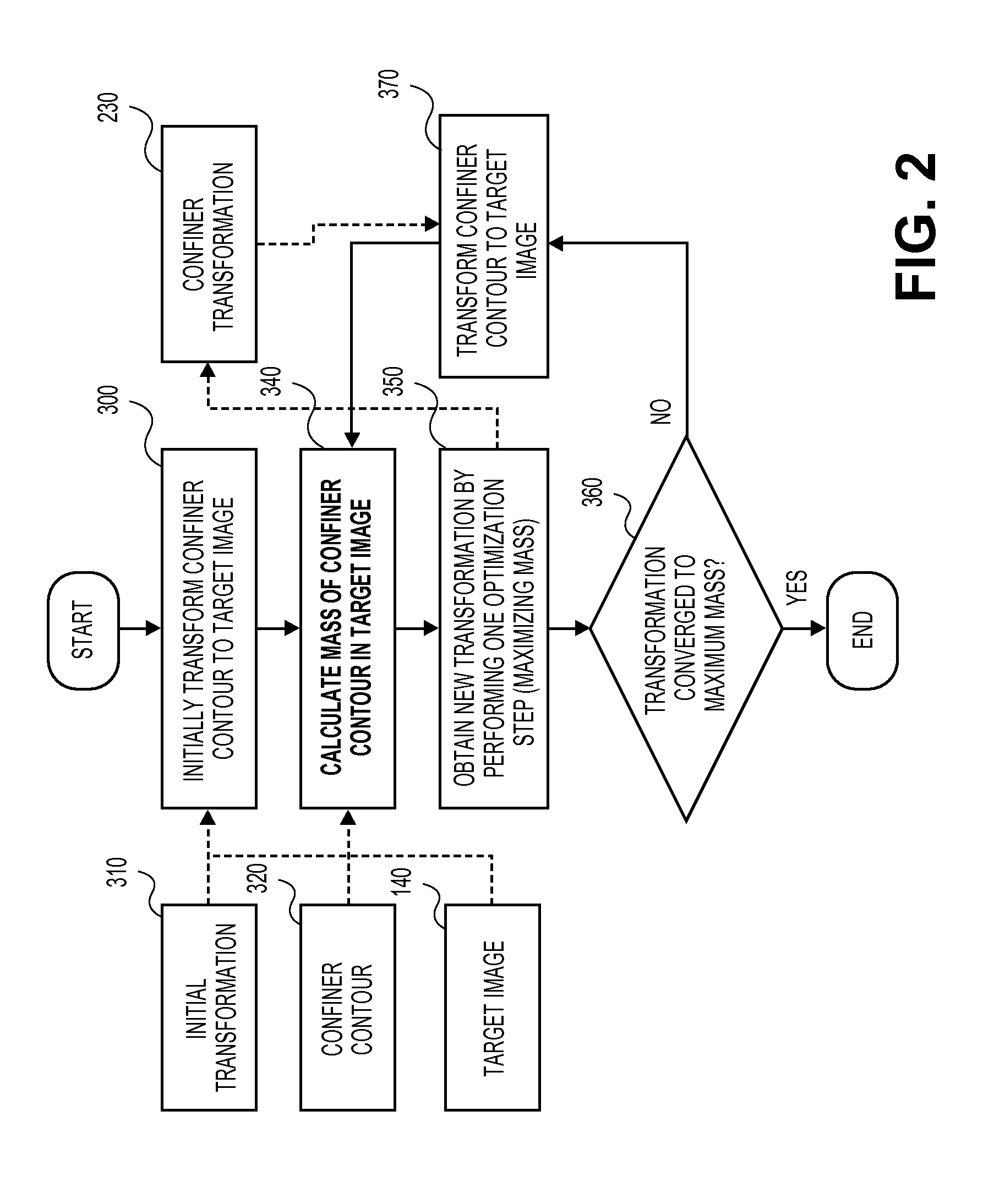Registration and visualization of image structures based on confiners
- Summary
- Abstract
- Description
- Claims
- Application Information
AI Technical Summary
Benefits of technology
Problems solved by technology
Method used
Image
Examples
Embodiment Construction
[0040]The described exemplary embodiments are intended to assist in the understanding of the invention and are not intended to limit the scope of the invention in any way.
[0041]FIG. 1 is a flow chart describing the principle steps of a method for registering image structures according to an embodiment of the invention. The confinement tree is generated as it will be described in more detail below in step 110 from a source image 100. The confinement tree is loped to a certain number of leaves in step 120. From the route branch of the confinement tree a confiner contour is selected for registration in step 130. The contour is then registered to a target image 140 in step 150. According to an embodiment, the region of the registered contour has an area corresponding to a respective region in the source image. If for example both the source image and the target image have the same dimension, the region of the registered contour has the same or nearly the same area as the respective regi...
PUM
 Login to View More
Login to View More Abstract
Description
Claims
Application Information
 Login to View More
Login to View More - R&D
- Intellectual Property
- Life Sciences
- Materials
- Tech Scout
- Unparalleled Data Quality
- Higher Quality Content
- 60% Fewer Hallucinations
Browse by: Latest US Patents, China's latest patents, Technical Efficacy Thesaurus, Application Domain, Technology Topic, Popular Technical Reports.
© 2025 PatSnap. All rights reserved.Legal|Privacy policy|Modern Slavery Act Transparency Statement|Sitemap|About US| Contact US: help@patsnap.com



